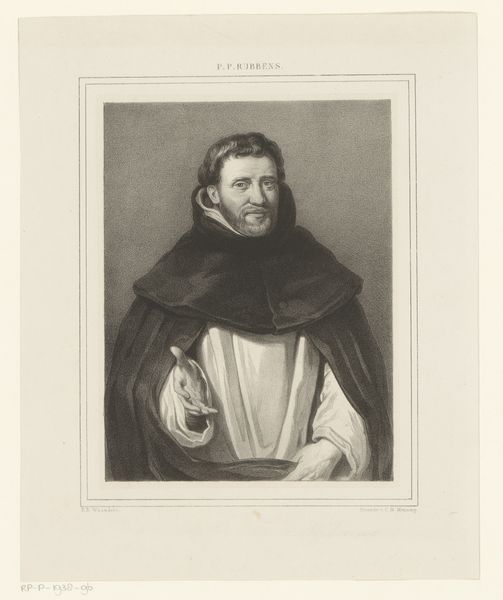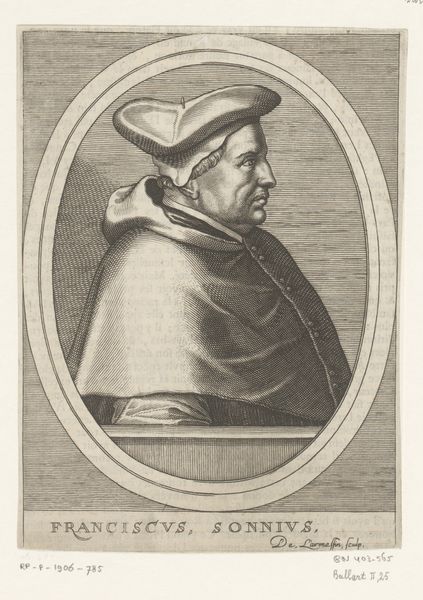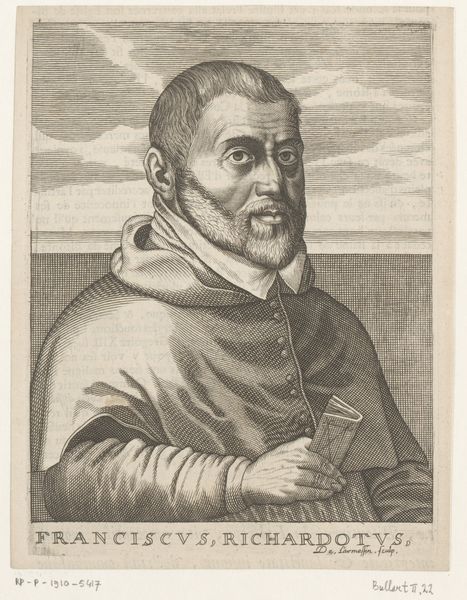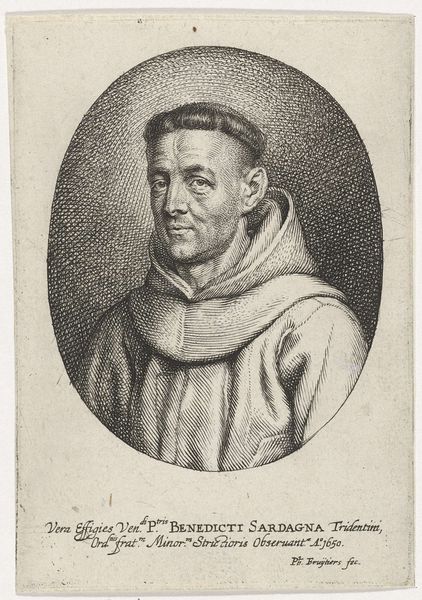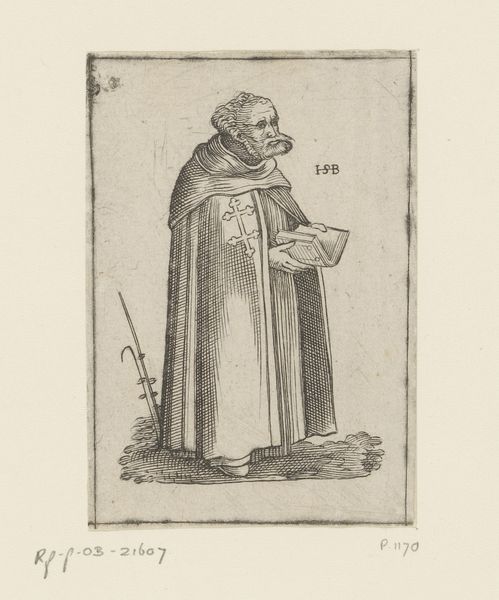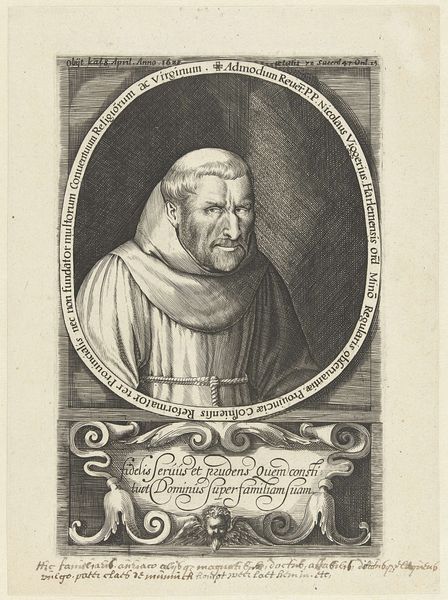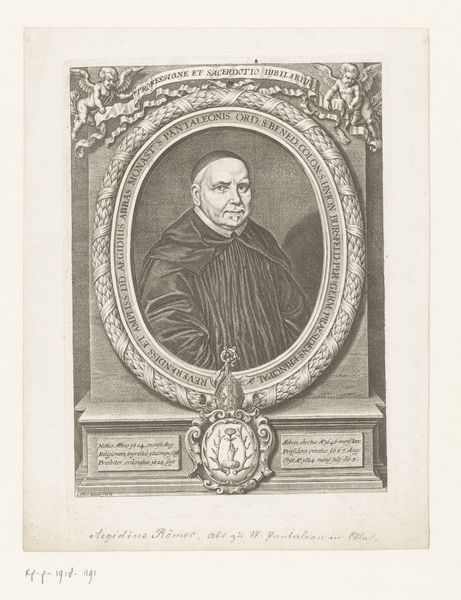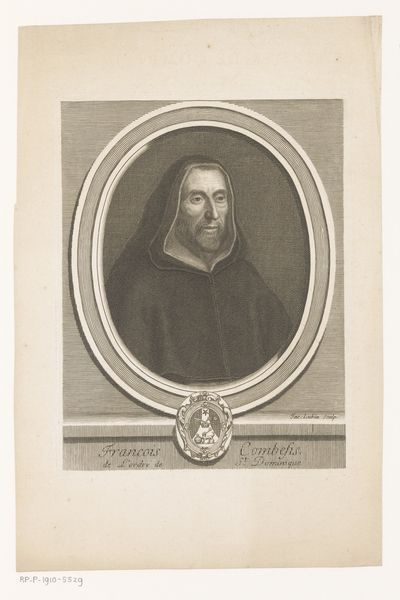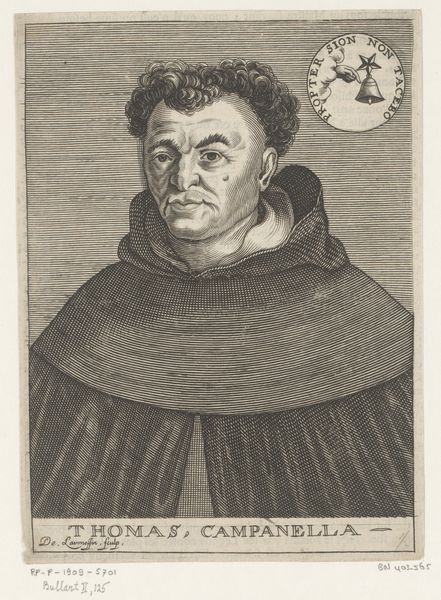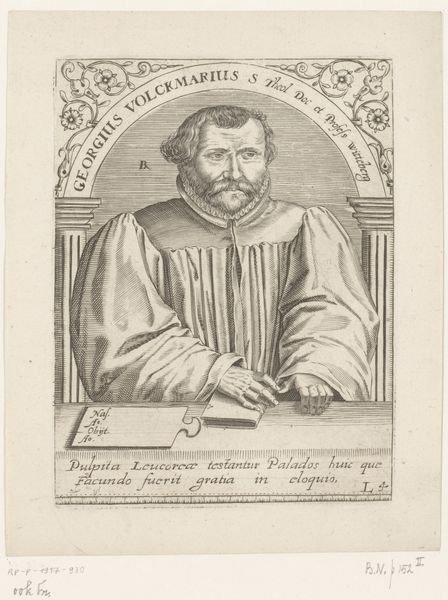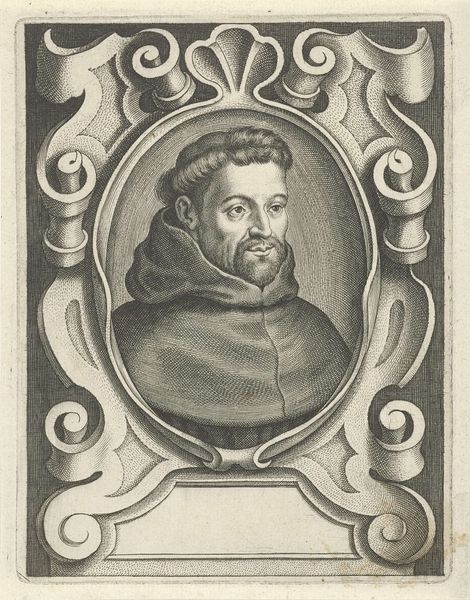
print, engraving
#
portrait
#
aged paper
# print
#
book
#
old engraving style
#
framed image
#
19th century
#
history-painting
#
academic-art
#
engraving
#
realism
Dimensions: height 257 mm, width 193 mm
Copyright: Rijks Museum: Open Domain
This print, portraying Francisco Jiménez de Cisneros, was created by Heinrich Rieter in the late 18th century using etching and engraving techniques. The process begins with coating a metal plate with a waxy, acid-resistant substance, then drawing through it with a sharp needle. Acid then bites into the exposed lines, creating grooves that hold ink. Engraving is a more direct, physically demanding process, using a tool called a burin to carve lines directly into the metal. Here, both methods were employed. Look closely, and you can see the subtle tonal variations achieved through etching, combined with the crisp precision of engraved details. Printmaking like this allowed for the mass production and distribution of images, democratizing art and knowledge. This portrait, carefully crafted through laborious handwork, speaks to the evolving relationship between art, labor, and accessibility in the 18th century. It reminds us that even seemingly straightforward images are embedded in complex networks of production and consumption.
Comments
No comments
Be the first to comment and join the conversation on the ultimate creative platform.
